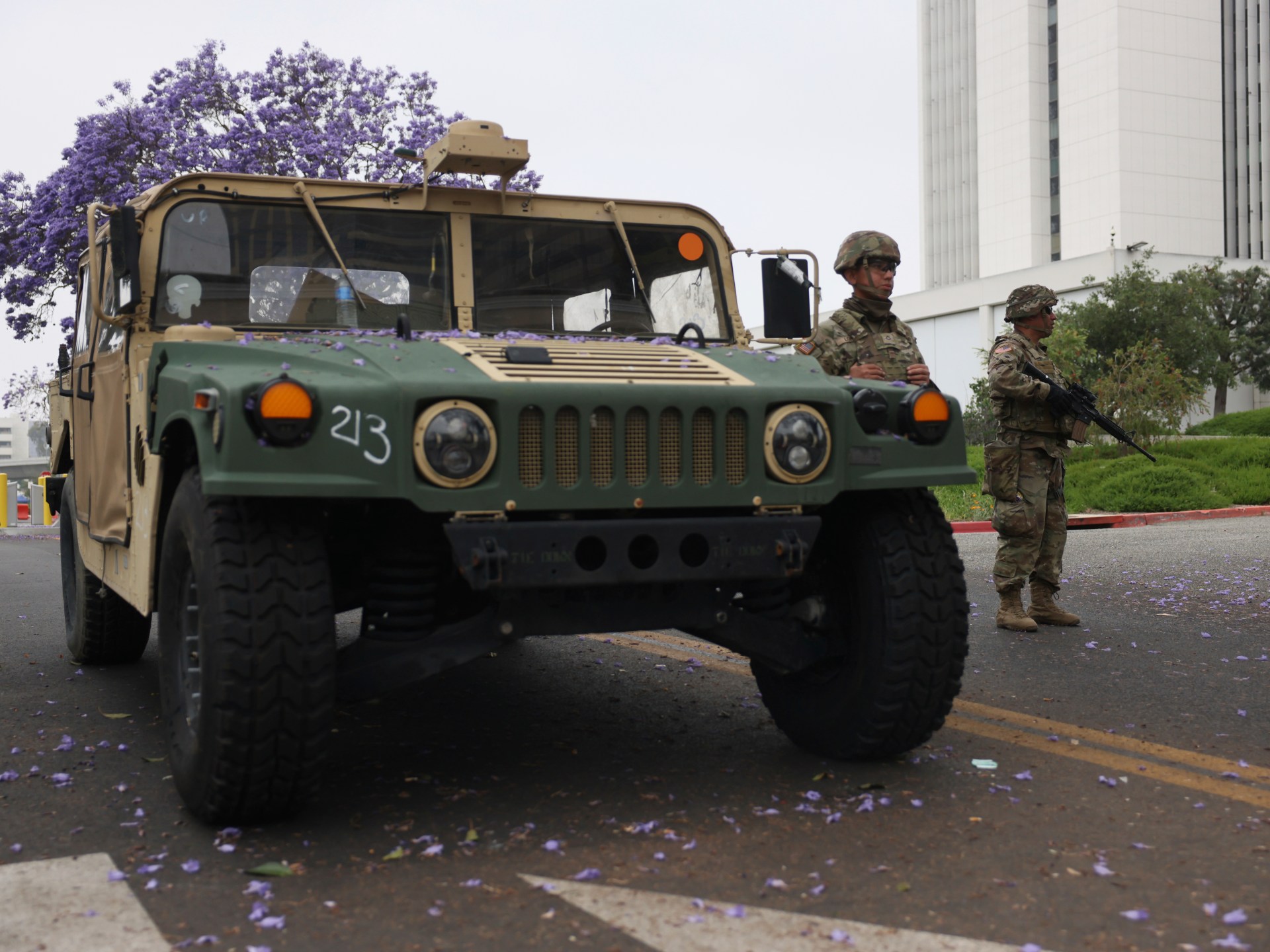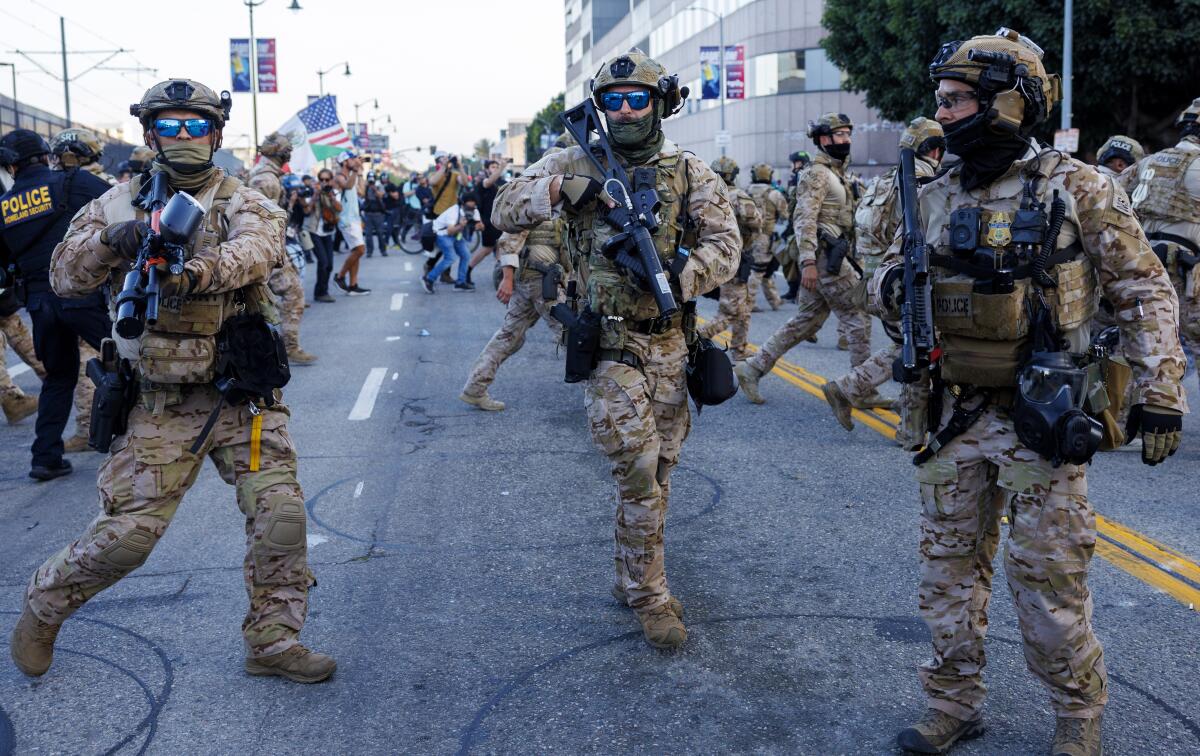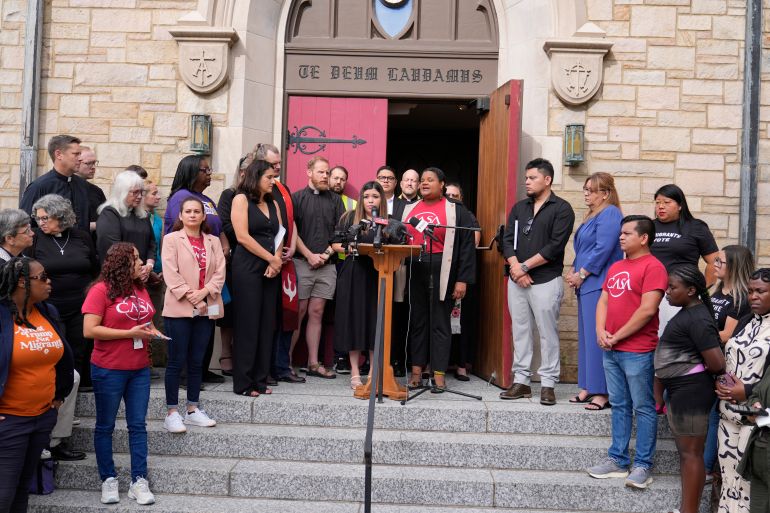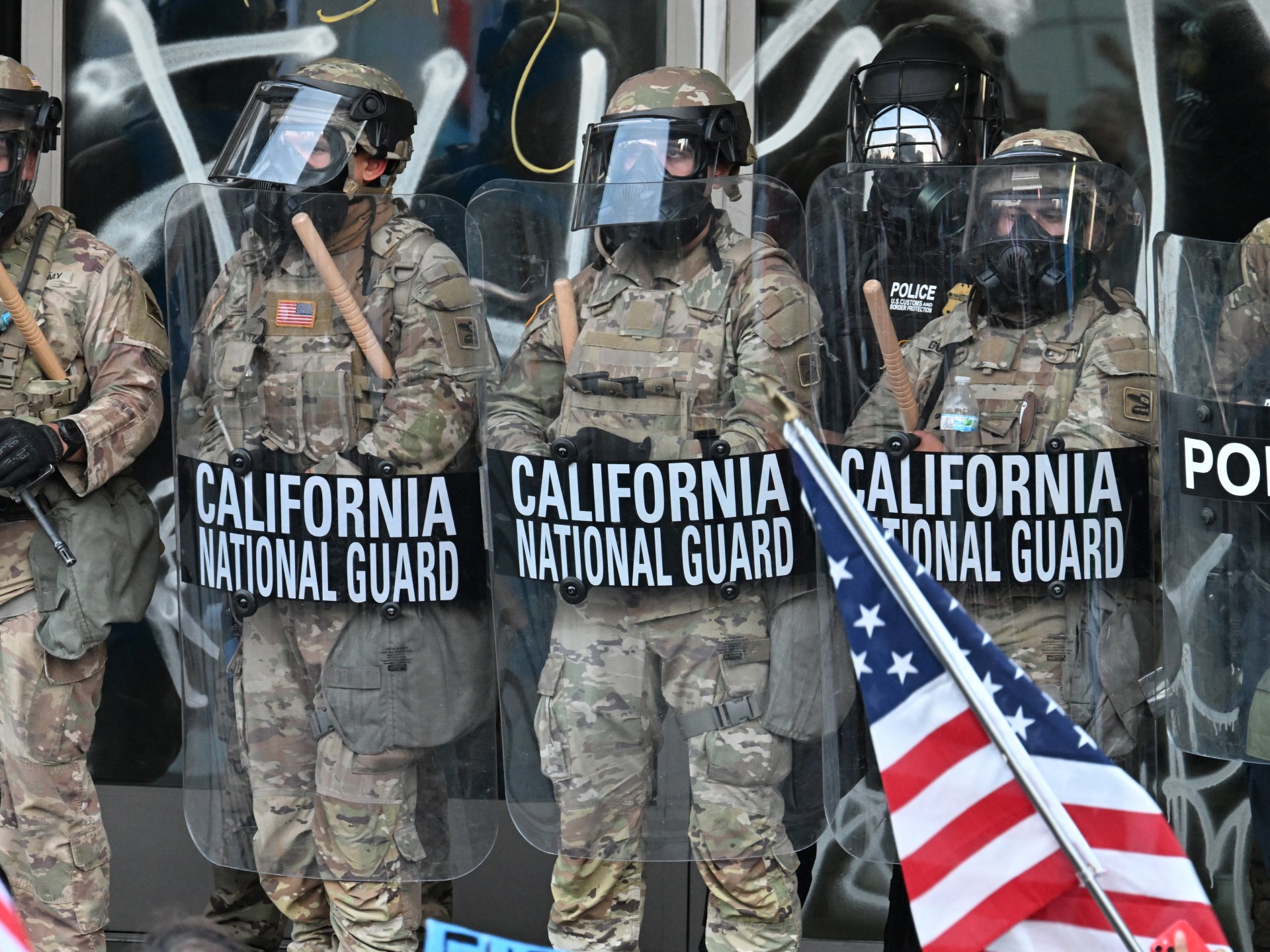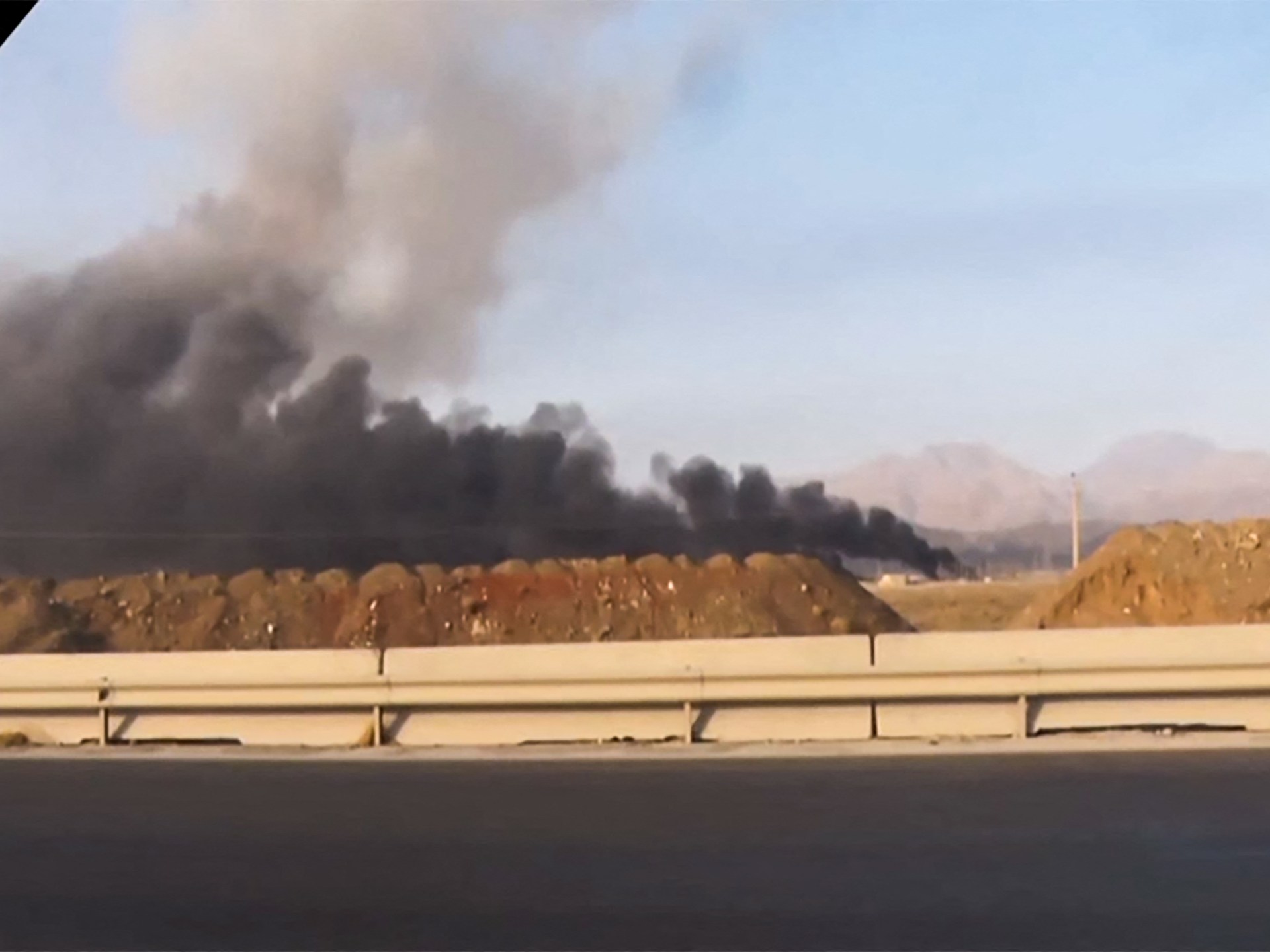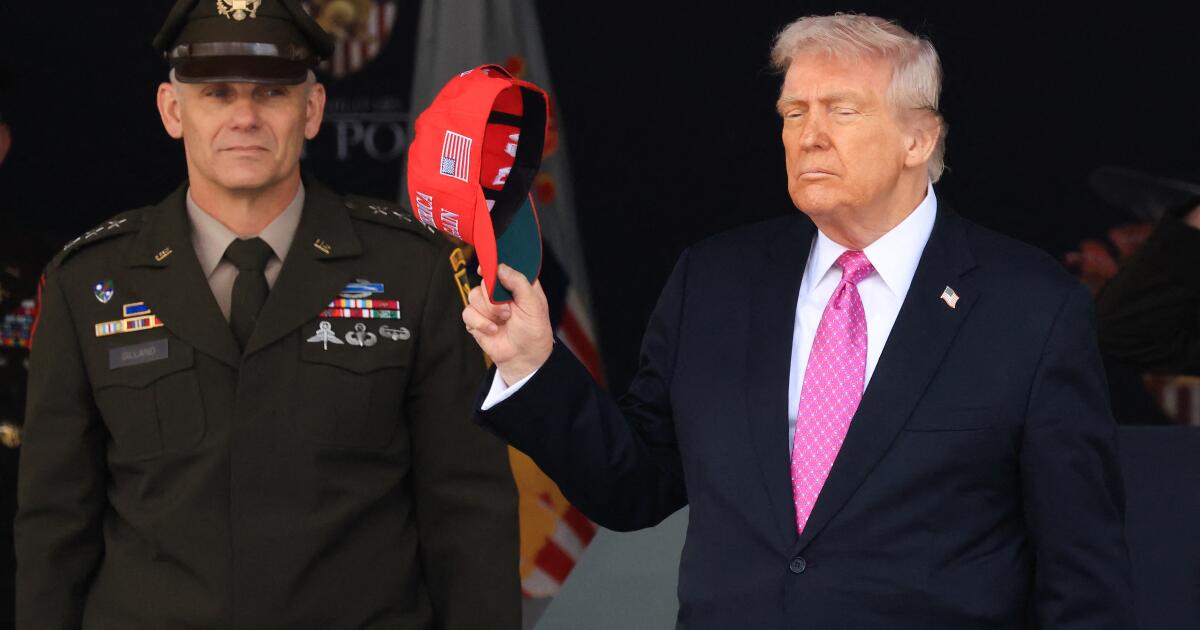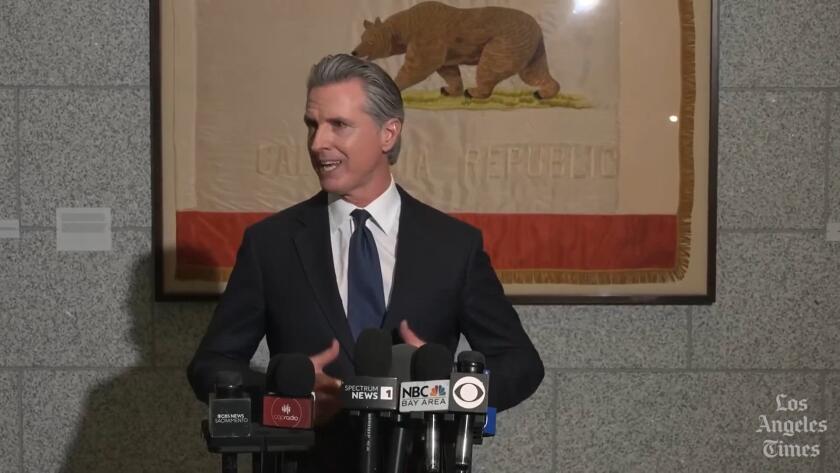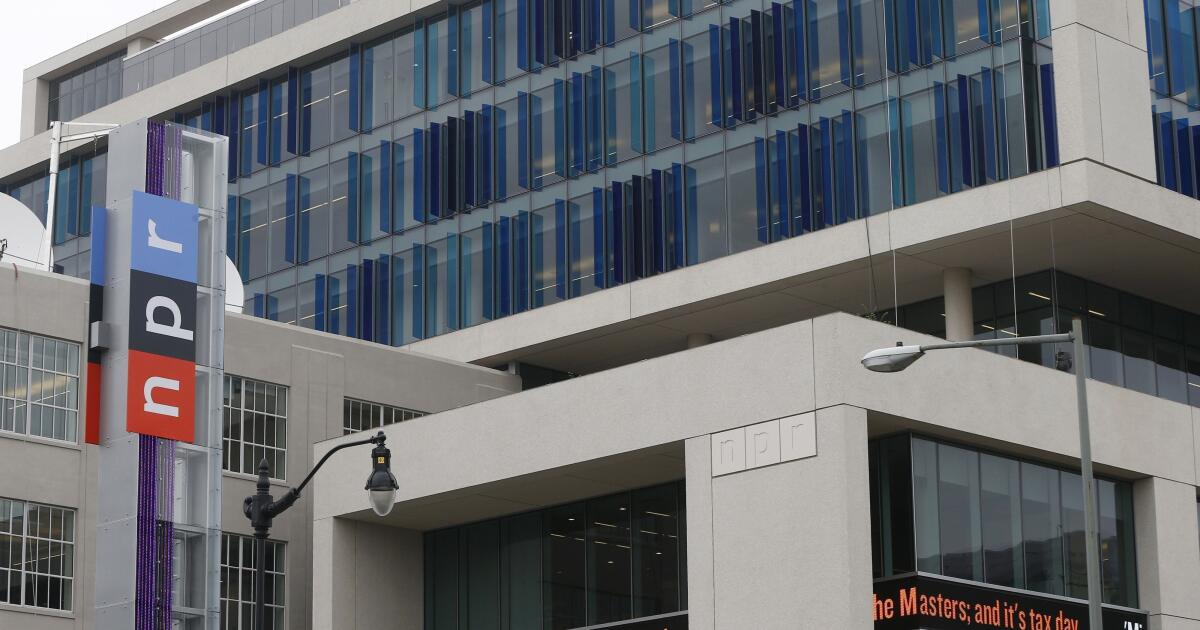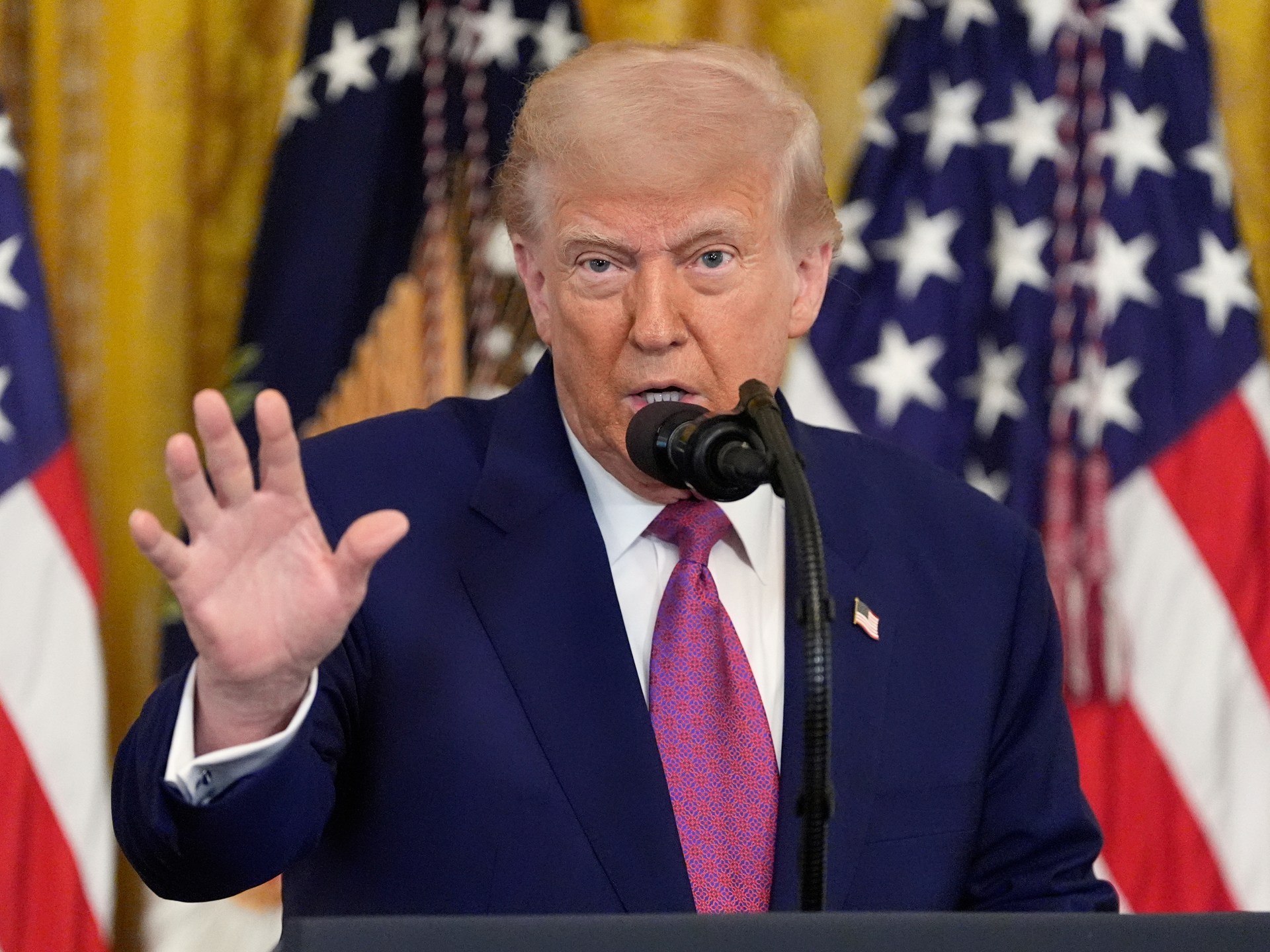US Marines detain civilian amid court battle over Los Angeles deployment | Donald Trump News
The United States Marines have deployed to Los Angeles following criticism and legal battles over whether President Donald Trump had the authority to use the military to quell civilian protests without state approval.
On Friday, Major General Scott Sherman of the US Army confirmed that 200 Marines were arriving in southern California to protect a federal building. A total of 700 Marines have been authorised for deployment to the region.
“I would like to emphasise that the soldiers will not participate in law enforcement activities,” Sherman said during a briefing.
Later in the day, the news agency Reuters confirmed with the military that the Marines had carried out their first-known detention, restraining a civilian with zip ties. The Trump administration has said the Marines will accompany Immigration and Customs Enforcement (ICE) on raids and arrests.
“Any temporary detention ends immediately when the individual can be safely transferred to the custody of appropriate civilian law enforcement personnel,” a military spokesperson told Reuters.
Federal law generally prohibits the military from participating in civilian law enforcement activities, and military officials have been careful to draw a line between temporary detentions and formal arrests — the latter of which they cannot do.
The Marines join National Guard troops already in the Los Angeles area following the eruption of protests on June 6, when residents took to the streets to express their displeasure with President Trump’s immigration raids, some of which targeted local hardware stores and other workplaces.
While many of the demonstrations were mostly peaceful and limited to a small part of the city, the Los Angeles Police Department (LAPD) did experience tense clashes with some protesters, who hurled objects and set driverless Waymo vehicles on fire. Police responded with flashbangs, tear gas and rubber bullets.
Trump, meanwhile, dubbed the protesters “bad people” and “insurrectionists” and announced the deployment of the National Guard on the evening of June 7.
The president cited Title 10 of the US Code, which allows a president to call up the National Guard if there is a “rebellion or danger of rebellion” against the federal government. Trump and his allies framed the demonstrators as part of a migrant “invasion” imperilling the US.
“To the extent that protests or acts of violence directly inhibit the execution of the laws, they constitute a form of rebellion against the authority of the Government of the United States,” Trump wrote in a presidential memorandum.
A legal battle
It was the first time since 1965 that a US president had authorised the National Guard’s deployment to a state without the governor’s permission. The last time was to protect civil rights protesters who were marching through segregated Alabama and faced threats of violence.
Presidents have called up the National Guard to address domestic unrest in the years since, but only with the cooperation of local authorities. In 1992, for instance, then-President Bill Clinton answered a request from California’s governor at the time to send National Guard members to address the Rodney King protests in Los Angeles.
Trump’s decision to circumvent the authority of California’s present-day governor, Gavin Newsom, has led to a legal fight over whether he exceeded his powers as president.
Newsom filed a lawsuit to block the use of military troops outside of federal sites, and on Thursday, a pair of court decisions left the future of the recent deployment unclear.
First, on Thursday afternoon, District Court Judge Charles Breyer of San Francisco sided with Newsom, calling Trump’s actions “illegal” and a violation of the US Constitution.
In his 36-page decision, Breyer ruled that the Trump administration had failed to show a danger of rebellion in Los Angeles.
“While Defendants have pointed to several instances of violence, they have not identified a violent, armed, organized, open and avowed uprising against the government as a whole,” he wrote. “The definition of rebellion is unmet.”
He added that he was “troubled” by the Trump administration’s argument that a protest against the federal government could be tantamount to rebellion, warning that such logic could violate the First Amendment right to free speech.
“Individuals’ right to protest the government is one of the fundamental rights protected by the First Amendment, and just because some stray bad actors go too far does not wipe out that right for everyone,” Breyer said.
He called for an injunction against Trump’s use of National Guard members, saying “it sets a dangerous precedent for future domestic military activity” and “deprives the state for two months of its own use of thousands of National Guard members”.
Nearly 4,000 members of the California National Guard have been authorised for deployment to Los Angeles under Trump’s command.
But the Trump administration quickly appealed Judge Breyer’s injunction. By late Thursday, the 9th US Circuit Court of Appeals had temporarily blocked the injunction, allowing Trump to continue using the National Guard until a hearing could be held on the matter next week.
On Friday, Trump celebrated that decision on his social media platform, Truth Social.
“The Appeals Court ruled last night that I can use the National Guard to keep our cities, in this case Los Angeles, safe,” Trump wrote.
“If I didn’t send the Military into Los Angeles, that city would be burning to the ground right now. We saved L.A. Thank you for the Decision!!!”
Newsom, meanwhile, has continued his call for Trump to end what he framed as illegal control of the National Guard. He has also accused the military presence of heightening tensions with protesters, not dissipating them.
“@RealDonaldTrump, you must relinquish your authority of the National Guard back to me and back to California,” Newsom wrote on social media Thursday.
He has called the Republican president’s federalisation of the National Guard an “unmistakable step toward authoritarianism”.
The California governor is seen as a possible Democratic contender for the presidency in the 2028 election cycle.
